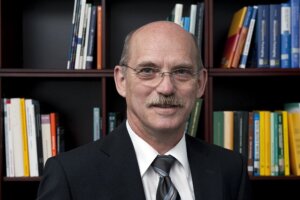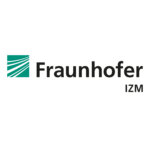The Fraunhofer Institute for Reliability and Microintegration IZM is marking its thirtieth year with a high-profile international conference in September. The Institute that now employs more than 400 people at its three sites was founded by twenty-one German scientists on a mission. Its main site in the historic architectural brickwork masterpiece in Berlin is not just a place with lots of history. With many scientific advances born here, it is the place where the future of packaging and interconnection technologies for microelectronic systems is made.
The begining

Led by Herbert Reichl, a group of researchers from the Technical University and Humboldt University of Berlin and the Academy of Science at Chemnitz came together to have its own form of reunification: that of applied research in West and East Germany. This was the birth of the Fraunhofer Research Institution for Reliability and Microintegration. Its mission: To create competitive packaging and interconnection technologies for industrial use, using redistribution approaches that were never used before in Europe to open up new industrial vistas for chip manufacturers. The Institute helped put Germany on the map as the location for microelectronics. A first cooperation contact with the Institute for Microperipheric Technologies at the Technical University of Berlin was signed, and the Institute has shared much of its work and personnel with the university ever since.
The early years
Fraunhofer IZM immediately made its mark in its first year. As a first for Europe, it began using more economical polymer circuit boards for flip-chip assembly as a flagship technology for cheaper chip production. For flip-chip assembly, naked semiconductor chips are turned or “flipped” on their heads and connected to the substrate with special contacting bumps on their entire active side. The approach makes bumping individual wafers much cheaper and reduces the amount of space needed on each chip by a lot. Only two years later, the Fraunhofer researchers launched the very first flip-chip assembly line in Europe, working with leading hardware makers and industrial engineers to demonstrate the potential of the technology.

The great success in science and industry brought Fraunhofer IZM the desirable recognition as an official Fraunhofer institute and full part of the Fraunhofer Society. 1997 saw the first high-profile use of the flip-chip technology in the pixel detectors of particle accelerators, starting the ongoing partnership between Fraunhofer IZM and CERN with a trial detector module using flip-chip technology that would soon be used at CERN.1 The flip-chip line managed to show that the technology used at Fraunhofer IZM can be integrated in production lines for surface-mounted (SMT) components and that it is truly ready for industrial use. This prime example of applied research attracted many small to medium enterprises to the Institute.
New areas of work, and new teams of professionals, were set up at several sites of the Institute: in 1998, a new unit in Teltow (Brandenburg) added polymer and composite materials to the range covered by the Institute. The same year saw the launch of a project group with the University of Paderborn, and cooperation was intensified with the Technical University of Chemnitz, which would eventually lead to a new microsystems and micro-sensor technology team that gained independence in 2008. In a similar fashion, the Institute had a unit working in Munich on reel-to-reel and 3D wafer technology since 2002, which has also matured to become its own institute.
What has stayed is the idea to provide a strong shoulder for applied research in packaging and interconnection technology. It only took a decade for Fraunhofer IZM to grow from around 20 to more than 200 members of staff and to expand its revenue from 1.4 million Deutschmark in its first year to 27.3 million Euros in 2004.
The second decade

For ten years, the researchers at Fraunhofer IZM concentrated on the search for suitable processes for microelectronic packaging and interconnection technologies, the focus began to shift in 2003 to the integration of applications. Novel elastic and flexible materials were tried out and continue to be the object of research work. The market for wearable or smart textiles was born and remains an important field for the Institute. The first garments with integrated communication systems were exhibited at the IFA 2005, including a system for bike couriers that combines order processing, location and navigation functions and is powered directly by the bicycle’s dynamo. Other highlights at the showstopper exhibit included an automated security system that could identify the rider and prevent bicycle theft. GPS systems were integrated to help cyclists get around, and the garment came with a display and fabric keyboard integrated into the arms to control the system.
Fraunhofer IZM continues to evolve in lockstep with the changing requirements in the market and the industry. It has made a name for itself in science and industry with its technical solutions in the automotive and industrial electronics sector, in medical technology, ICT, and in the semiconductor business writ large. In 2010 a site in Dresden was launched and continues to go from strength to strength as the center for “All Silicon System Integration Dresden” (ASSID). The unit brings together staff from Berlin and Dresden that have access to cleanrooms and labs with cutting-edge, industry-ready equipment at both locations. The two processing lines are distinguished not just by their flexible handling of different wafer formats, but also their ability to be customized perfectly to specific processing conditions. In 2010, the facilities helped develop a camera that is smaller than a grain of salt and perfectly designed for endoscopy use. This milestone for medical technology was due to the sophisticated packaging design, with the optical and sensor components integrated on the wafer level.
The third decade

After twenty years of active practice and untrammeled growth both in its budget and output and its workforce, now headed by Professor Klaus-Dieter Lang, Fraunhofer IZM wanted to reach out to other research partners interested in hardware production. This led to the creation in 2017 of Start-A-Factory, Berlin‘s unique prototyping line built specifically for the circumstances and needs of hardware startups trying to make their first prototypes.
Sustainability and a careful use of precious resources have also become important for Fraunhofer IZM, reflected in the major ongoing Green ICT initiative that tries to optimize the sustainability record of information and communication technology, drawing on the Institute’s long-standing expertise with lifecycle assessments and sustainability studies. The term ‘reliability’ in the Institute’s name does not only stand for reliable partnerships between science and industry, but also long-lasting electronics that are more sustainable already on the production line. The sustainability experts at Fraunhofer IZM have spent years working with leading ICT enterprises and have been a part of the development of the Fairphone – the smartphone designed to last and not be replaced once the next model hits the store shelves.
And today?

At today’s Fraunhofer IZM, more than 400 people are working under the careful management of Professor Martin Schneider-Ramelow to master challenges like the recent chip scarcity, the increasing need for more and more data, the energy crisis, and much more. They are developing processes and technologies for quantum electronics, for 6G, for zero-power electronics, and high-performance systems working in exceptional, often harsh environments.
One thing the research and admin teams have kept since the beginning: The wish to learn more and push physical boundaries. This is the driving force behind the symposium hosted to mark the Institute’s thirtieth anniversary: For “Crossing Frontiers in Microelectronics”, the researchers will show which frontiers they intend to cross in the next decades. The conference is hosted with high-profile industry partners and will be accompanied by a special ceremonial act with leading minds from politics and science. It will open its doors on 28 September at the Institute’s Berlin home.
1 Hybrid pixel detectors are used in a wide range of application in particle or radiation diagnostics. They include a sensor carefully prepared for the detection job and one or more electronic reader units that are connected by flip-chip technology.


















